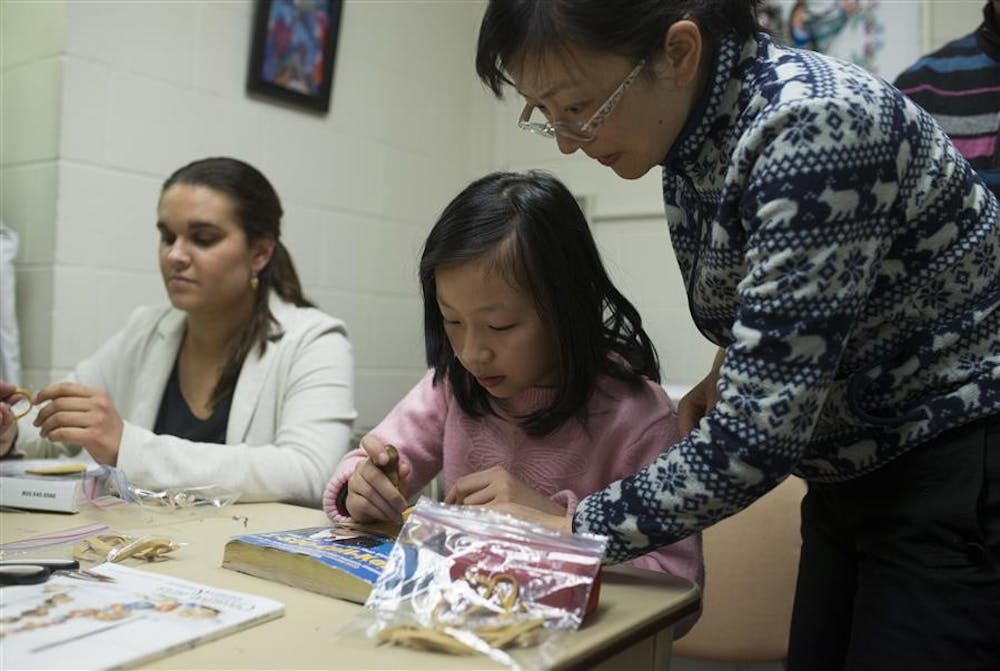Members of First Nations Educational and Cultural Center crafted leather pouches and ate food during a potluck dinner Tuesday as part of the organization’s goal of giving Native American students a place on campus to connect to their culture.
FNECC Director Brian Gilley said the activities reflected what tribes would do in their free time.
“Every tribe has some sort of craft tradition,” Gilley said. “In native communities when people are sitting around socializing, they do crafts or sing. It brings them together.”
FNECC provided the materials to make the leather pouches, which resembled what Gilley called “strike-a-light bags.”
These bags were often used to carry materials to build fires or to carry supplies, he said.
When the FNECC started craft nights three years ago, Gilley said they ran into conflict with groups who wanted to exploit them and extract knowledge rather than understand their culture.
“They were Indian fetishizers,” he said. “They were settlers trying to demand us and school us about things.”
Advancements in the group during the last three years and support from IU Vice President for Diversity, Equity and Multicultural Affairs James Wimbush have reduced this type of interaction and encouraged more willingness to work together, Gilley said.
“Now we’re more established, so we see less stereotyping,” Gilley said. “People are reaching out to us rather than independently doing stuff.”
Before, Gilley said he saw dormitory bulletin boards for Native American history month that stereotyped American Indians. These, he said, were inaccurate.
Nathan Steininger, co-founder of a community group of Native Americans called Indiana Two Spirit Society, said he thought the biggest problem their community faced
was being invisible.
“There’s not a lot of awareness, so when people look at me, they don’t see a native person,” Steininger said.
“We’re not, but we’re still seen as the vanishing race. People then ask, why would you need a program for this if there aren’t that many?”
Steininger expressed the need for groups like FNECC on campus.
“These groups help bring us together and bring us a space that feels familiar so students don’t feel isolated,” Steininger said. “Native students deal with a lot of culture shock and homesickness. When they get homesick, they go home.”
Native Americans make up only 1 percent of the population, and only 1 percent of that 1 percent goes on to receive any kind of higher education, Steininger said.
In order to grow and for their communities to be educated, there needs to be social support for Native Americans on campus.
The group also wants to include more diverse perspectives within the Native American community during their events, Gilley said.
Next spring, they hope to include information about GLBTQ Native Americans.
Lead organizer for Freedom Indiana in Bloomington Hannah Miller attended the event to build relationships with LGBT-affirming communities.
“Yes, our main goal is to beat HJR-3, but when the campaign is over, we still want to change the culture in Indiana through relationships,” Miller said.
In addition including LGBT diversity in their events, Gilley said he is excited for how these events have already become more diversified.
“We’re really a meeting point for all,” Gilley said. “People here are speaking Chinese and caring about our culture and being respectful just as we would be at their culture events. That’s a big deal compared to where we were three years ago.”
Follow reporter Suzanne Grossman on Twitter @suzannepaige6.
FNECC organizes potluck, craft night

Get stories like this in your inbox
Subscribe





